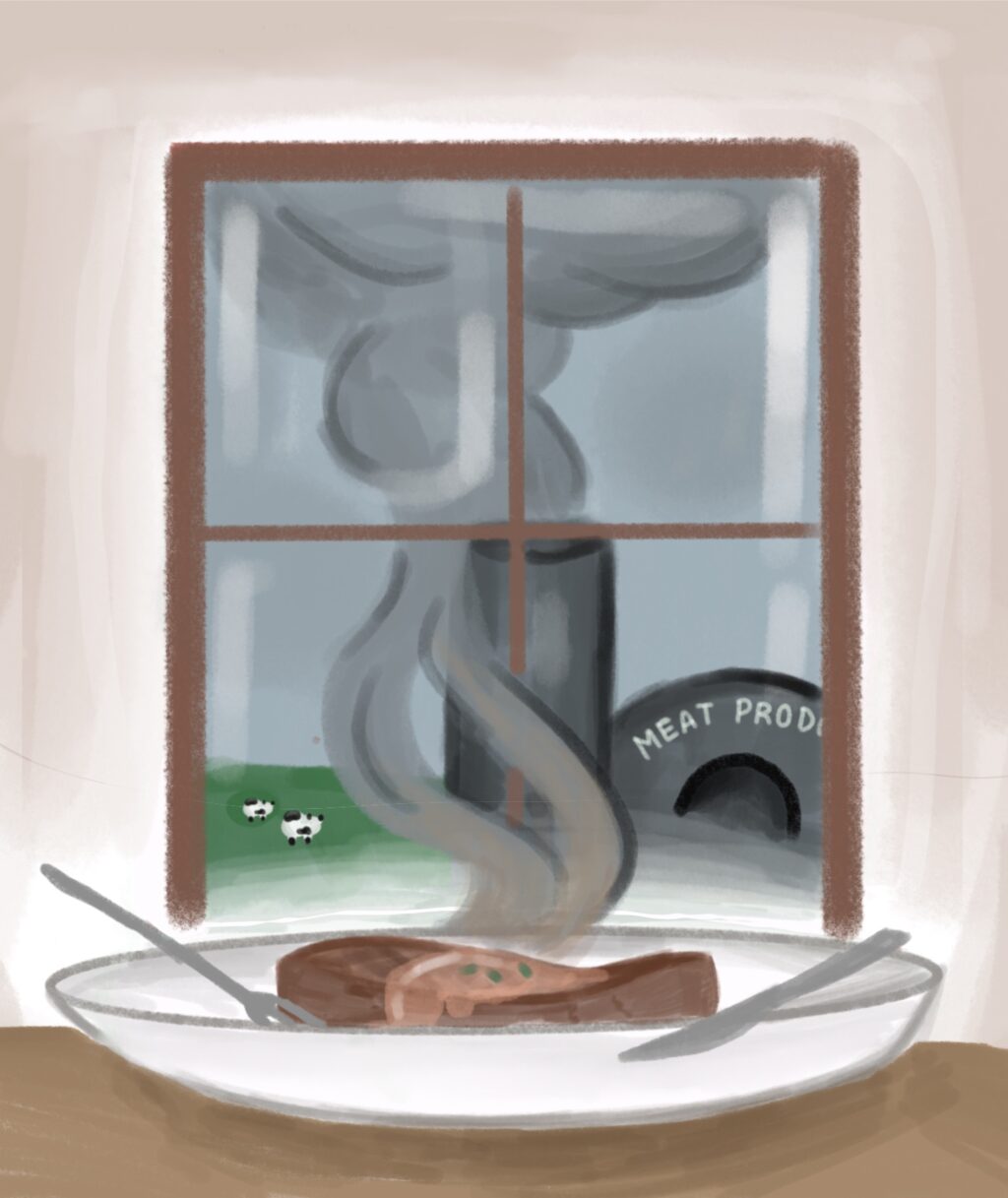
When children become old enough, they come to the realization that the meat on their dinner plate was once a living animal. For many, this is a simple fact of life. Others, like myself, find this difficult to accept. In seventh grade, I finally made the personal choice of becoming vegetarian and shortly after, I vowed never to eat meat again. Apart from this moral quandary, the meat industry presents more concerns, ranging from animal cruelty to greenhouse gas emissions. As the world’s population grows, it brings the future of the meat industry and its subsequent consequences of continuing this system into question.
Recently, cultured or “lab-grown” meat has gained media attention after the Food and Drug Administration ruled it safe for public consumption. Cultured meat is created by the multiplying of animal cells and tissue collected humanely, which are then cultured into muscle, fat and tissue. This process is an alternative to the farming and slaughtering of animals and, though alien, is an important innovation in the meat industry, given climate change and the negative environmental impacts of the meat industry.
The Bay Area is a testament to our society’s capability to adapt to changes for the benefit of the climate. There has been a substantial increase in preferences and accommodations for vegan or vegetarian diets. Fully plant-based restaurants are also becoming more common, showing that the Bay Area’s mindset has shifted. Gracias Madre, a plant-based Mexican restaurant located in the Mission in San Francisco, is a prime example of this.
Founded in 2010, Gracias Madre has succeeded in veganizing many traditional Mexican dishes. The restaurant’s focus on making dishes from fresh ingredients highlights its namesake — devotion to Mother Earth. I recently visited the restaurant with a few meat-eating friends and I was met with a vibrant menu and flavorful meal.
The restaurant has a cozy, dimly lit atmosphere, and serves brunch through dinner. I began with an appetizer of chips, guacamole, salsa and cashew queso. The cashew queso tasted nearly identical to non-vegan ones, and was even preferable due to its slight heat. The accompanying salsas were a unique and memorable part of the meal, showcasing flavors such as green chiles and lime, as well as a variety of spice levels.
“14.5% of human-caused greenhouse-gas emissions are produced by global livestock”
For the main courses, chefs didn’t shy away from flavor and heat with delectable sauces starring in dishes such as their signature chilaquiles and chimichanga. Several dishes, including the potato and chorizo hash, contained soy-based meat replacements that provided a source of protein and retained the authenticity of the traditionally non-vegan food.
The standout dish, however, was their plantain french toast topped with cashew whipped cream. The toast was unlike anything I had ever eaten before, perfectly balancing the distinctively sweet plantains and creamy whipped cream. Despite the whipped cream’s nut source, it tasted identical to the cream-based version. Along with its balanced flavors, the creativity of the dish truly made it unique. I paired the food with their signature almond milk horchata, a sweet and light drink that perfectly translated the flavors of traditional horchata. I also tried their housemade hibiscus, lime and mint juice, which was tangy and refreshing.
Overall, the restaurant was thoroughly enjoyable due to its friendly and accommodating staff, atmospheric interior and delectable food. The dishes were impressive in their own right, regardless of their plant-based status, and I would highly recommend both vegans and nonvegans to visit Gracias Madre.
Gracias Madre, among other vegan and vegetarian restaurants, provides an opening for more people to eat entirely plant-based or meat-free food. Hopefully, as cultured meat is introduced into markets, it will be received with the same open mindset that has been shown to veganism and vegetarianism.
According to the Food and Agriculture Organization of the United Nations, 14.5% of human-caused greenhouse-gas emissions are produced by global livestock, meaning the cultured meat field has the potential to drastically reduce environmental implications. Along with reducing greenhouse gas emissions, lab-grown meat is less water-intensive and doesn’t require cultivating crops to feed livestock. Countries around the world are beginning to manufacture lab-grown meat, with Singapore allowing it to be sold. Singapore’s success is a tribute to the importance of furthering innovation in society.
Currently, cultured meat has a few drawbacks, from the general public’s opinion to the uncertain timeline of integrating it into U.S. markets. Additionally, productivity is currently not high enough to justify the manufacturing cost, a major issue hindering lab-grown meat from hitting the markets. However, the industry is advancing rapidly and the rise in meat-free diets indicates cultured meat’s likely success.
Gracias Madre’s ability to stay in business for over 12 years reveals the longevity of plant-based diets. In coming years, this mentality of sustainability may be able to be applied to lab-grown meat and other meat substitutes for the sake of the Earth and the future.



